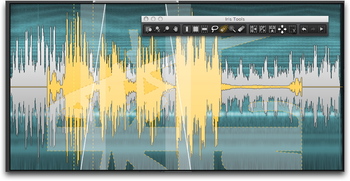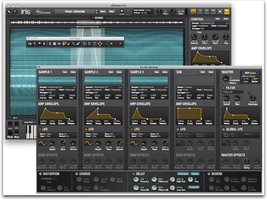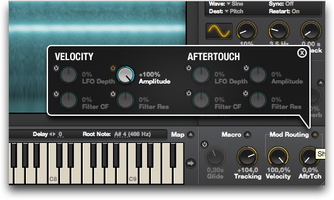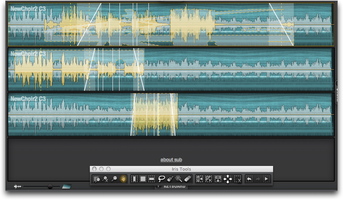iZotope is famous for its effects, audio processing and restoration tools. Now, the manufacturer enters the world of virtual instruments with the launch of Iris, its first synth. Knowing iZotope, we expect nothing but a very original approach. Are we wrong?
|
Introducing iZotope Iris
The instrument is available on iZotope’s website, alone or as a bundle including the synth plus two sound libraries: Wood and Glass. The latter include 260 and 150 samples, respectively, plus almost 100 programs each. You can also buy them separately for $29 or $49, while the instrument alone costs $249. Iris is sold with a 4GB sample library and countless programs.
You get a standalone version and several plug-ins (AU, VST, VST 3 and RTAS) for Mac (Intel only) and Windows with 64-bit support. The instrument also includes the latest Radius version, the time compression/expansion and pitch shifting software called Radius RT.
The installation of the synth and libraries, as well as the registration, went smooth and easy. Registration can be done on a hard drive or with an iLok (it’s a good thing to have the choice) using the serial number provided during purchase.
So, What Is It All About?
Let’s start with the overall concept of the instrument. Iris includes three independent sample players plus a special oscillator. The instrument also offers a master section including a filter and four different effects, usable as send or master effects.
Here is a re-sampling example based on a single sample played raw without processing (first sample at the beginning of the example). Note that the four first deep sounds are played only for half of their duration.

Classic but clean sound. Now, the Radius RT comes into action: its basic principle is to keep the same duration regardless of the pitch.

This real-time algorithm offers excellent quality processing without artifacts or audible filtering effects.
Up to now, nothing but standard features, except when it comes to the amazing quality of Radius RT.
But we haven’t looked at the Tools tab.
Tools For a Change
People who know iZotope RX2 will start to understand what it is all about as soon as they open the Tools tab. All your thoughts will be confirmed by the screen showing areas, lines and strokes relative to the loaded samples.
Here is a simple example based on the flute you already heard. We’ll use it three times. The first time selecting only some of the upper harmonics. And the result is:You get a tremendous processing power: you can select the spectral content of a waveform very precisely, loop the waveform and process it with powerful synthesis tools. This also explains the fact that the main engine of the  instrument provides you with only one filter that will be useful for some special modulation effects. For subtractive synthesis purposes (suppression of harmonics from a rich waveform), this filter won’t be useful because the tools provided allow you to select the spectral and harmonic content very precisely within a waveform. This way, the iZotope’s slogan “Find Music in Everything” really makes sense. In fact, each and every recording can be dissected in order to extract the content that could be useful for musical purposes, because you have the possibility to isolate and group the harmonic content…
instrument provides you with only one filter that will be useful for some special modulation effects. For subtractive synthesis purposes (suppression of harmonics from a rich waveform), this filter won’t be useful because the tools provided allow you to select the spectral and harmonic content very precisely within a waveform. This way, the iZotope’s slogan “Find Music in Everything” really makes sense. In fact, each and every recording can be dissected in order to extract the content that could be useful for musical purposes, because you have the possibility to isolate and group the harmonic content…

Now, we select only some low-frequency content (of course, the same note is played in every sound sample).

Now, let’s detune it:

And mixing everything:

We intentionally chose a very simple example using the same sample. However, the result is very far from the original sound. And the whole process took only two minutes.
Here are some examples to show the sound range of the synth, including classic sounds and also original sounds.

Download the sound files here: flac.zip
Conclusion
Some of my friends who make sound synthesis directly in iZotope RX2 will love Iris. This synth definitely has an original approach when it comes to re-synthesis, even if there are some brilliant and famous competitors like Alchemy. The selection of audio content with tools that recall graphic design software is quite a unique experience. It almost makes you feel like a beginner because you can’t anticipate the result of your selection (and every experienced user knows how a sawtooth will sound when processed with a 4th order filter and 50% resonance). In this respect, Iris is a new, exciting sound weapon.
Iris is no all-round synth that provides bass, pads, leads, etc. like a good subtractive synth. On the contrary, if you want to create weird sounds combining authentic and synthetic sounds on a very original way, or if you like to experiment with every possible audio material to create something new every time, Iris will be a dream come true! All the more considering that the algorithms are almost perfect and its design and ease-of-use are pure joy, making this instrument accessible for almost anyone interested in sound synthesis.
So, is it a success for iZotope once again? Yes, definitely…






